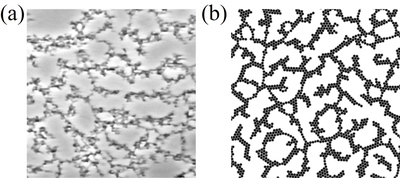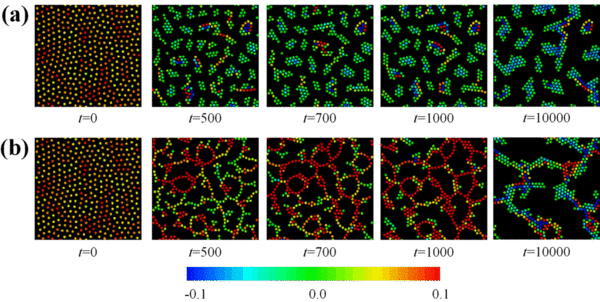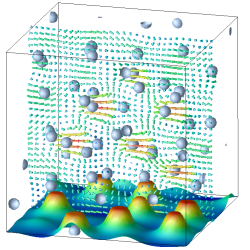

We develop a new simulation method of colloidal suspensions, which we call a fluid particle dynamics (FPD) method. This FPD method, which treats a colloid as a fluid particle, removes the difficulties stemming from a solid-fluid boundary condition in the treatment of hydrodynamic interactions between the particles. The importance of interparticle hydrodynamic interactions in the aggregation process of colloidal particles is demonstrated as an example. This method can be applied to a wide range of problems in colloidal science.
Colloidal suspensions can be regarded as an ideal model system for such key daily materials as emulsions, protein solutions, foods, and inks. When colloidal particles strongly attract each other, they aggregate, phase-separate, and sometimes form gels. The basic understanding of this spatially heterogeneous jamming process is of crucial importance from both scientific and industrial viewpoints. Usually it is believed that if colloids attract very strongly with adhesion energy more than 10 times the thermal energy, networks formed by aggregation do not coarsen with time and a stable gel is immediately formed. Contrary to this common belief, we demonstrate by numerical simulation that the coarsening of a colloidal network can proceed by self-generated mechanical stress even without any thermal noise for a system of long-range interactions: fractureinduced coarsening. This remarkable kinetic pathway of purely mechanical origin may shed new light on our basic understanding of the stability and aging (or coarsening) behaviour of colloidal gels.


A new method of simulation of the dynamics of charged colloidal
suspensions is formulated that is based on the fluid particle dynamics method
so as to incorporate the
electrohydrodynamic interactions properly. The fluid particle approximation
allows us to treat dynamic coupling among motions of the three relevant
elements of charged colloidal suspensions, i.e., colloidal particles, ion clouds,
and liquid, in a physically natural manner.
Electrophoresis is one of the most important methods for separating colloidal particles,
carbohydrates, pharmaceuticals, and biological molecules such as DNA, RNA, proteins, in terms
of their charge (or size). This method relies on the correlation between the particle drift velocity
and the charge (or size). For a high-resolution separation, we need to minimize fluctuations of
the drift velocity of particles or molecules. For a high throughput, on the other hand, we need
a concentrated solution, in which many-body electrostatic and hydrodynamic interactions may
increase velocity fluctuations. Thus, it is crucial to reveal what physical factors destabilize the
coherent electrophoretic motion of charged particles. However, this is not an easy task due to
complex dynamic couplings between particle motion, hydrodynamic flow, and motion of ion clouds.
Here we study this fundamental problem using numerical simulations. We reveal that addition
of salt screens both electrostatic and hydrodynamic interactions, but in a different manner.
This allows us to minimize the fluctuations of the particle drift velocity for a particular salt
concentration. This may have an impact not only on the basic physical understanding of dynamics
of driven charged colloids, but also on the optimization of electrophoretic separation.

